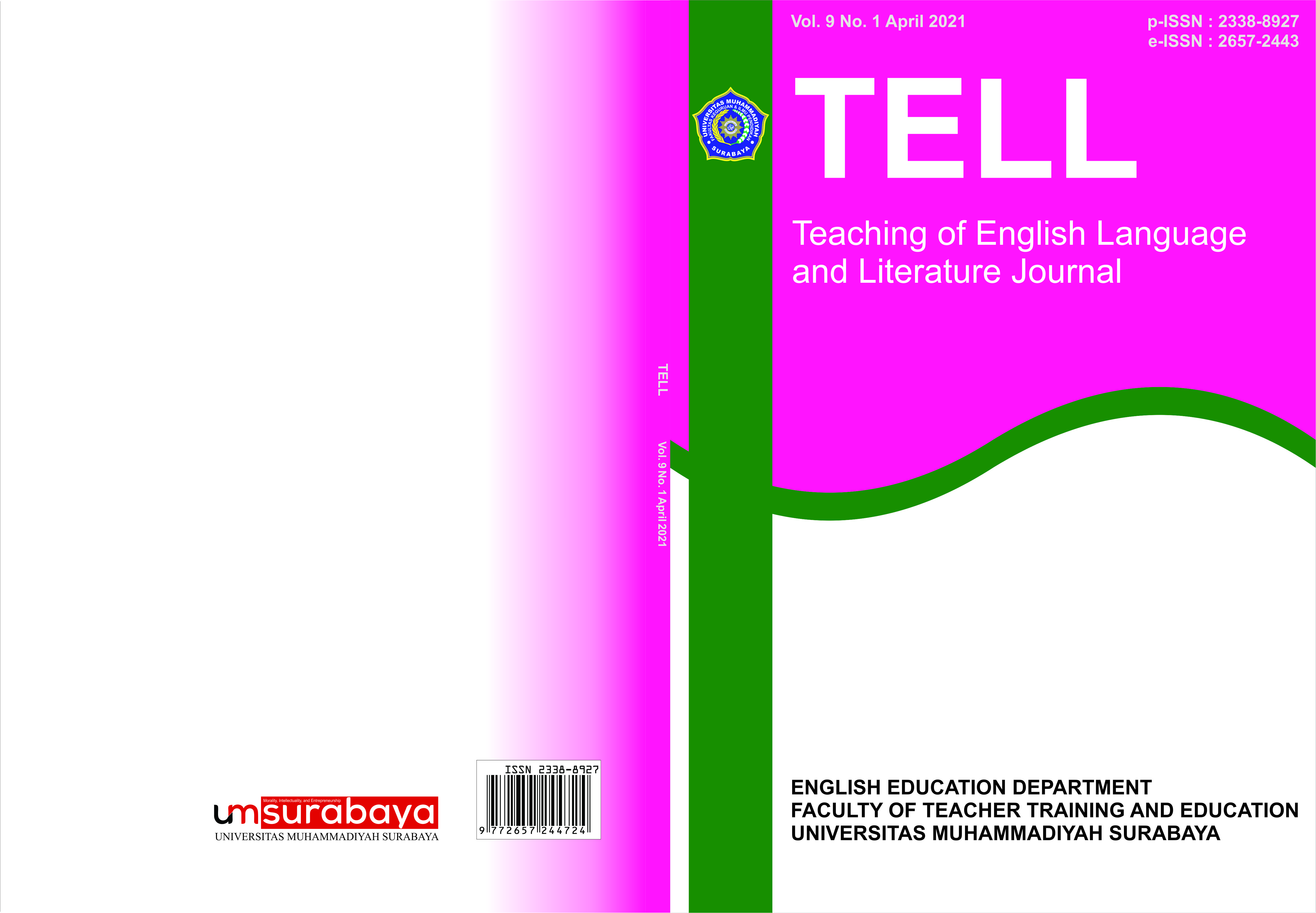The Correlation between EFL Students' Anxiety and Their English Writing Skills
Abstrak
Artikel teks lengkap
Referensi
Brown, H. D. (2000). Principles of language learning and teaching (Vol. 4). Longman New York.
Cheng, Y. S. (2002). Factors associated with foreign language writing anxiety. Foreign Language Annals, 35(6), 647–656. https://doi.org/10.1111/j.1944-9720.2002.tb01903.x
Cheng, Y. S. (2004). A measure of second language writing anxiety: Scale development and preliminary validation. Journal of Second Language Writing, 13(4), 313–335. https://doi.org/10.1016/j.jslw.2004.07.001
Chow, B. W. Y., Chiu, H. T., & Wong, S. W. L. (2018). Anxiety in reading and listening English as a foreign language in Chinese undergraduate students. Language Teaching Research, 22(6), 719–738. https://doi.org/10.1177/1362168817702159
Ebersöhn, L., & Eloff, I. (2004). Keys to educational psychology. Juta and Company Ltd.
Gay, L. R. (1996). Educational Research: Competencies for Analysis and Application (5th ed.). In New Jersey:Prentice-Hall.
Hassan, B. (2001). The Relationship of Writing Apprehension and Self-Esteem to the Writing Quality and Quantity of EFL University Students. Mansoura Faculty of Education Journal.
Heaton, J. B. (1975). Writing English language tests: A practical guide for teachers of English as a second or foreign language. Addison-Wesley Longman Limited.
Ho, M. (2015). Exploring Writing Anxiety and Self-Efficacy among EFL Graduate Students in Taiwan. Higher Education Studies, 6(1), 24–39.
https://doi.org/10.5539/hes.v6n1p24
Horwitz, E. (2001). Language anxiety and achievement. Annual Review of Applied Linguistics, 21(2), 112–126. https://doi.org/10.1017/s0267190501000071
Krashen, S. (1982). Principles and practice in second language acquisition.
Larson, J. E. (2009). Educational psychology: Cognition and learning, individual differences and motivation. Nova Science Publishers, Incorporated.
Ohata, K. (2005). Potential Sources of Anxiety for Japanese Learners of English: Preliminary Case Interviews with Five Japanese College Students in the U.S. TESL-EJ, 9(3), 1–21.
Rahim, S. A., Jaganathan, P., Sepora, T., & Mahadi, T. (2016). An Investigation on the Effects of Writing Anxiety on Readiness of Writing among Low Proficiency Undergraduates. International Journal of Language Education and Applied Linguistics (IJLEAL).
Rao, Z. (2007). Training in brainstorming and developing writing skills. ELT Journal, 61(2), 100–106. https://doi.org/10.1093/elt/ccm002
Reynolds, W. M., Miller, G. E., & Weiner, I. B. (2003). Handbook of psychology.
Salikin, H. (2019). Factors affecting male and female Indonesian EFL students’ writing anxiety. Indonesian Journal of Applied Linguistics, 9(2), 316–323. https://doi.org/10.17509/ijal.v9i2.20229
Salkind, N. J. (2008). Encyclopedia of educational psychology. SAGE publications.
Santrock, J. W. (2011). Educational Psychology 5th Edition. Educational Psychology.
Sudijono, A. (2005). Pengantar statistik pendidikan. PT Raja Grafindo Persada.
Umar, I. N., & Rathakrishnan, M. (2012). The Effects of Online Teachers’ Social Role and Learning Style on Students’ Essay Writing Performance and Critical Thinking in a Wiki Environment. Procedia - Social and Behavioral Sciences, 46, 5730–5735. https://doi.org/10.1016/j.sbspro.2012.06.506
Weems, C. F., Silverman, W. K., Rapee, R. M., & Pina, A. A. (2003). The role of control in childhood anxiety disorders. Cognitive Therapy and Research, 27(5), 557–568. https://doi.org/10.1023/A:1026307121386
Younas, M., Hamid, M., & Farzeen, M. (2014). Exploring the Causes of Writing Anxiety : A Case of B . S . English Students. Language in India, 14(8), 197–208.
Penulis
Hak Cipta (c) 2021 Tell : Teaching of English Language and Literature Journal

Artikel ini berlisensi Creative Commons Attribution-NonCommercial 4.0 International License.
Authors who publish with this journal agree to the following terms:
- Authors retain copyright and grant the journal right of first publication with the work simultaneously licensed under a Creative Commons Attribution-NonCommercial 4.0 International License that allows others to share the work with an acknowledgment of the work's authorship and initial publication in this journal.
- Authors are able to enter into separate, additional contractual arrangements for the non-exclusive distribution of the journal's published version of the work (e.g., post it to an institutional repository or publish it in a book), with an acknowledgment of its initial publication in this journal.
- Authors are permitted and encouraged to post their work online (e.g., in institutional repositories or on their website) prior to and during the submission process, as it can lead to productive exchanges, as well as earlier and greater citation of published workÂ

